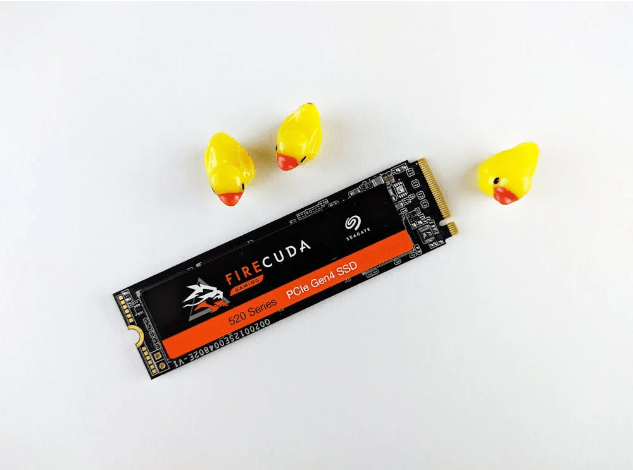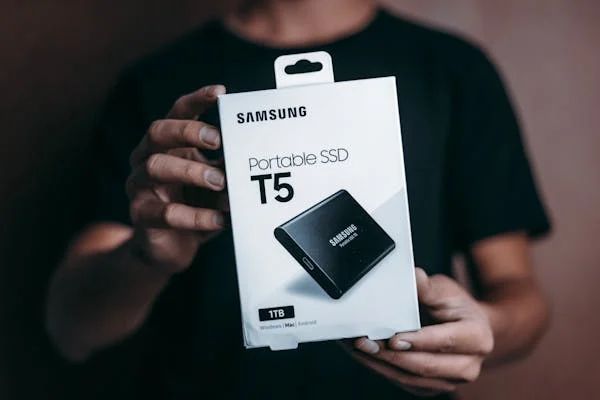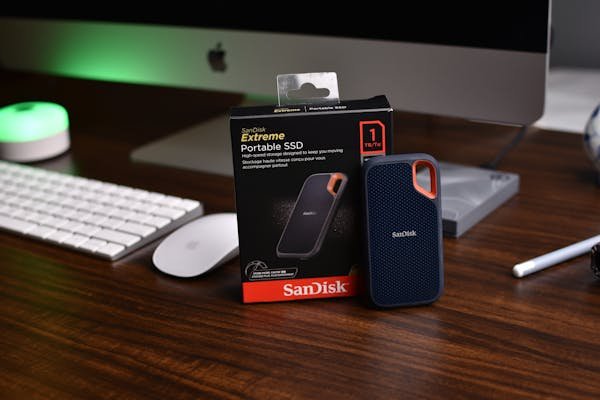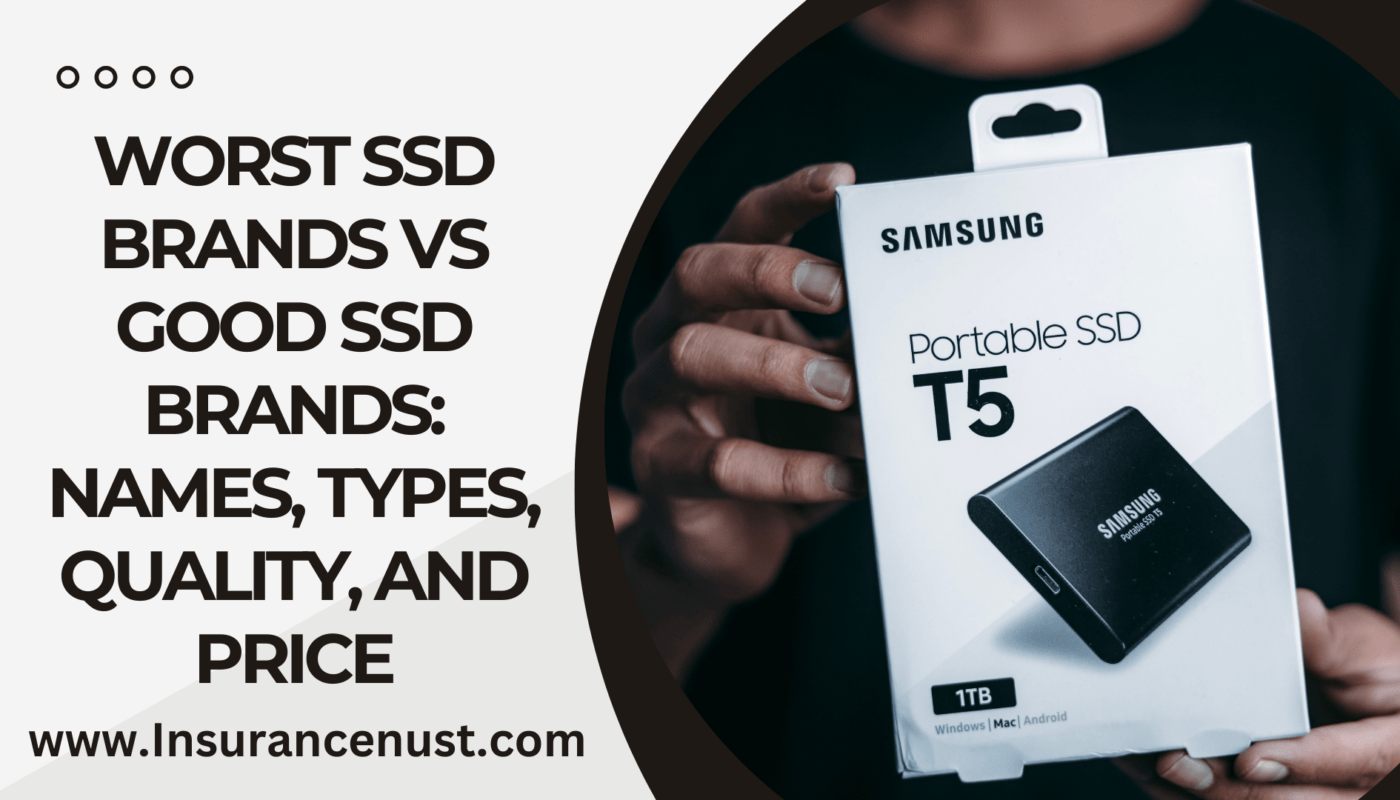In this article we can details about “Worst SSD Brands vs Good SSD Brands: Names, Types, Quality, and Price”. Solid State Drives (SSDs) have indisputably transformed the landscape of data storage in recent years. Renowned for their exceptional performance and reliability, SSDs have made significant strides in both personal and enterprise computing. Unlike traditional Hard Disk Drives (HDDs), SSDs utilize flash memory to store data, thereby eliminating the mechanical limitations and latency issues associated with spinning disks. This results in faster data access speeds, allowing users to boot their operating systems and load applications in a fraction of the time it would take using HDDs.
The importance of SSDs cannot be overstated as they contribute to lower power consumption and enhanced durability. Without moving parts, SSDs generate less heat and consume less energy, resulting in extended battery life for portable devices. Improved durability is another considerable advantage; SSDs are less susceptible to damage from physical shock, making them an ideal choice for laptops and other mobile computing solutions. Over the last decade, these attributes have made SSDs the standard in modern computing environments.
The purpose of this blog post is to provide a comprehensive comparison between the worst and good SSD brands. By scrutinizing their names, types, quality, and price points, we aim to shed light on which SSD brands offer the best value and reliability. Whether you are an enthusiast building a new gaming rig, a professional requiring robust storage solutions, or a casual user seeking to upgrade an old system, this guide will help you make an informed decision when selecting an SSD. By the end of this post, you will gain valuable insights into the leading SSD brands, as well as those that consistently fall short in terms of performance and dependability.
Identifying the Worst SSD Brands
In the rapidly evolving landscape of Solid State Drives (SSDs), distinguishing quality brands from subpar ones is crucial for both casual users and tech enthusiasts. Unfortunately, certain SSD brands have garnered notoriety for their inconsistent performance, elevated failure rates, and lackluster customer service. Among these, names like PNY, Kingspec, and Silicon Power often surface in discussions that critique poor SSD quality.

Customer reviews across various platforms indicate recurrent issues with these brands. PNY, for instance, has repeatedly faced criticism for its erratic performance and suboptimal data transfer speeds. Users have expressed frustration over significantly lower read and write speeds compared to advertised rates, which affects both the usability and reliability of their devices.
Similarly, Kingspec’s SSDs often struggle to maintain consistent performance standards, leading to a pervasive reputation for unreliability. Expert assessments and numerous consumer reports highlight this brand’s higher-than-average failure rates, casting doubts on its dependability. Users frequently report sudden device failures that result in data loss, exacerbating concerns about the long-term viability of these SSDs.
Silicon Power, despite being more established, has not been immune to criticism either. This brand’s SSDs are noted for sporadic firmware issues, often resulting in device crashes and data retrieval complications. Feedback from tech forums and expert evaluations frequently cite below-average durability and performance metrics, signaling caution for potential buyers.
Moreover,
Customer service plays a pivotal role in brand perception. Unfortunately, these brands often receive poor marks in this area as well. The difficulty in securing satisfactory support and slow response times compound user dissatisfaction, making issues harder to resolve swiftly. This negative customer experience contributes significantly to the adverse reputation surrounding these brands.
Given the essential role of SSDs in modern computing, making an informed choice becomes imperative. Understanding the pitfalls associated with certain brands can aid in avoiding performance issues and ensure a more dependable, seamless user experience with SSDs.
Exploring Types and Technologies in Worst SSD Brands

When scrutinizing the worst SSD brands, one of the significant aspects to consider is the types of NAND flash memory they utilize, as well as their controller technologies. Many lower-tier SSD brands often resort to employing outdated or inferior types of NAND flash memory, such as Triple-Level Cell (TLC) or Quad-Level Cell (QLC). Unlike Single-Level Cell (SLC) or Multi-Level Cell (MLC) technologies, TLC and QLC NAND are known for their lower endurance and slower data transfer speeds. While TLC and QLC SSDs might be more cost-effective, they generally exhibit a decrease in performance and longevity, making them less reliable choices for data storage.
Another critical factor contributing to the poor reputation of certain SSD brands is their use of substandard controller technologies. The controller is the brain of the SSD, tasked with managing data read/write processes, error correction, and wear leveling. Comparatively, premier brands invest in cutting-edge controllers that optimize performance and ensure greater stability. Conversely, the worst SSD brands often employ older or less advanced controller technologies which result in inadequate error correction mechanisms and inefficient wear leveling practices. This leads to issues such as increased vulnerability to data corruption and diminished drive lifespan.
Furthermore
The synergy between NAND flash memory and the controller dictates the overall performance of an SSD. Brands that utilize inferior components typically fail to strike a balance between these two critical elements, thereby exacerbating performance issues. For instance, the slow data transfer speeds prevalent in these SSDs can be attributed to sub-par interaction between their low-quality NAND and outdated controllers. Additionally, frequent firmware issues in the worst SSD brands further compound the problem, leading to inconsistent performance and unreliable data storage.
Consequently, users often face frustrating experiences with lower-tier SSDs, including slower boot times, prolonged file transfer durations, and unexpected data loss. Therefore, understanding the types of NAND and controller technologies that these SSD brands use provides significant insights into the root causes behind their poor performance and reliability. Addressing these shortcomings would necessitate a shift towards more advanced and reliable components, indicative of higher-quality SSD brands.
Quality Factors in Poor-Performing SSDs
When examining the discrepancies between poor-performing Solid State Drives (SSDs) and their more reliable counterparts, several critical quality factors come into play. These factors significantly influence not only the performance but also the longevity and reliability of the storage devices.
One of the primary considerations is build quality. Low-grade SSD brands often cut costs by using inferior NAND flash memory and controllers. These components are at the heart of any SSD and directly impact data transfer speeds and durability. High-quality NAND flash, such as those produced using advanced processes, tends to offer better performance and a longer lifespan. In contrast, cheaper, sub-par flash memory may wear out quickly, leading to data loss and unreliable functionality.
Firmware issues also plague poor-performing SSDs. Firmware is essentially the software that manages all operations within the SSD. Poor-quality brands often have underdeveloped or inadequately tested firmware, which can result in a host of problems like data corruption, slow performance, and even complete failure. Regular firmware updates are crucial for maintaining SSD performance, and lesser brands tend to lag behind in providing these updates or fail to provide them at all.
Thermal management is another pivotal factor. Effective thermal management is critical for maintaining optimal performance and longevity. High-end SSDs are designed with advanced cooling solutions, often incorporating heat sinks and efficient thermal materials. Poorly performing SSDs typically lack sufficient thermal management, resulting in overheating issues that can throttle performance and degrade the components faster.
Lastly
lack of optimization for various use cases significantly hinders SSD performance. High-quality SSD brands tailor their products for specific applications, whether for consumer laptops, enterprise servers, or gaming rigs, optimizing firmware and hardware configurations accordingly. Poor-performing SSDs often adopt a one-size-fits-all approach, leading to suboptimal performance across different use cases.
These quality factors—subpar build quality, defective firmware, poor thermal management, and lack of use-case optimization—collectively contribute to the underwhelming performance of bad SSD brands, severely impacting user experience and long-term reliability.
Pricing Pitfalls in Worst SSD Brands
When navigating the SSD market, understanding the relationship between price and quality is crucial. Unfortunately, some of the worst SSD brands take advantage of consumers’ desire for affordability, offering seemingly attractive prices that mask subpar products. These pricing strategies can lure unsuspecting buyers into making poor investments, resulting in significant dissatisfaction and potential additional costs in the long run.
Misleading pricing is a common tactic among lower-tier SSD brands. These companies often advertise their products at significantly lower prices compared to well-established brands, creating a deceptive sense of value. However, the old adage “you get what you pay for” frequently holds true. In many cases, cheaper SSDs from these brands suffer from inferior build quality, substandard performance, and reduced lifespan. Consequently, users may find themselves facing issues such as slower read and write speeds, higher failure rates, or outright data loss.
Aspect
To better illustrate this, consider a comparison between two SSDs at a similar price point. On one side, a reputed brand offers an SSD with robust warranty coverage, reliable performance, and a track record of quality. On the other side, an SSD from a less reputable brand may come with only minimal warranty, inconsistent performance, and a higher likelihood of failure. While the initial cost might appear appealing for the latter, the hidden costs associated with potential data recovery, replacement, and downtime can far exceed any upfront savings.
This underlines a critical aspect of purchasing storage solutions: balancing cost with performance. Opting for an SSD solely based on its low price can be a false economy, as recurring issues and replacements may ultimately lead to spending more than if a slightly more expensive, yet significantly higher-quality, option was chosen initially. Shoppers should therefore conduct thorough research, scrutinize product reviews, and consider the long-term value and reliability when making their decision.
Recognizing Good SSD Brands

In the rapidly evolving world of solid-state drives (SSDs), certain brands have consistently stood out for their exceptional performance, reliability, and customer support. Identifying these reputable SSD brands can aid consumers in making informed decisions, ensuring they invest in products that offer longevity and efficiency.
One such brand is Samsung, which has garnered widespread acclaim for its high-quality SSDs. The Samsung 970 EVO Plus is a flagship model that has been praised for its blistering speeds and reliable performance. Expert reviews frequently highlight its superior read and write speeds, making it a favorite among both everyday users and professionals.
Another notable name in the SSD market is Crucial. A subsidiary of Micron Technology, Crucial offers SSDs that are synonymous with dependability. The Crucial MX500, in particular, stands out for its balance of performance and cost-efficiency. Benchmark tests consistently show the MX500 performing well under diverse workloads, making it a reliable choice for a broad spectrum of users.
Western Digital
Western Digital, known for its extensive storage solutions portfolio, also produces some of the best SSDs available. The WD Black SN850 is one of their standout models, celebrated for its unmatched speed and gaming prowess. Industry experts frequently recommend the SN850 for gamers and power users seeking top-tier performance.
SanDisk

SanDisk, another respected brand in the SSD arena, offers reliable and high-performing drives like the SanDisk Extreme PRO. This model is particularly noted for its robustness and speed, making it ideal for demanding applications and professional workloads.
Kingston
Kingston, a veteran in the storage solutions industry, has also made significant strides with its SSD offerings. The Kingston KC2500 is a prime example, recognized for its impressive performance metrics and strong encryption features, making it a solid choice for enterprise environments.
These brands have established themselves in the market through a combination of rigorous testing, consistent positive feedback, and a commitment to quality. By opting for SSDs from these reputable brands, consumers can expect a high level of performance and longevity, ensuring their investment is well placed.
Superior Types and Technologies in Good SSD Brands
When evaluating good SSD brands, it is crucial to consider the sophisticated types and technologies they employ to deliver superior performance, durability, and future-proofing. One notable advancement in the realm of SSDs is the development and widespread adoption of 3D NAND technology. Unlike traditional planar NAND, 3D NAND stacks memory cells vertically, significantly increasing storage capacities while enhancing performance and reliability. This leap has paved the way for more compact and efficient storage solutions, enabling devices to manage larger volumes of data seamlessly.
Another critical aspect of high-performing SSDs is the choice of interface. PCIe (Peripheral Component Interconnect Express) has become a preferred interface for good SSD brands due to its higher data transfer rates compared to the older SATA (Serial ATA) interface. PCIe SSDs, particularly those utilizing NVMe (Non-Volatile Memory Express) protocols, offer remarkable speed, reducing latency and enhancing overall system responsiveness. The NVMe protocol optimizes the SSD’s performance by streamlining the processing of input/output operations, making it ideal for tasks that demand high-speed data access, such as gaming, video editing, and server environments.
Innovative controller technologies also play a significant role in distinguishing good SSD brands. Modern controllers manage various aspects of the SSD, such as error correction, data caching, and wear leveling. These controllers ensure the longevity and reliability of SSDs by evenly distributing write and erase cycles across the memory cells, thereby extending their lifespan. Additionally, advanced controllers can dynamically adjust performance based on workload, ensuring stable and efficient operation under diverse usage scenarios.
Ultimately, the investment in cutting-edge technologies like 3D NAND, PCIe interfaces, NVMe protocols, and robust controller technologies is what sets good SSD brands apart. These advancements not only contribute to enhanced performance and durability but also provide users with storage solutions that are resilient to future advancements and expanding data needs.
High-Quality Attributes in Best-Performing SSDs
High-performing SSDs are distinguished by a combination of advanced features and meticulous engineering that contribute to their superior performance, longevity, and reliability. One of the pivotal attributes is build quality. Top-tier SSD brands employ robust materials and state-of-the-art manufacturing processes to produce durable products capable of withstanding intensive use. This includes using high-grade flash memory chips, often from the latest generations, ensuring faster data transfer rates and greater endurance.
Another critical factor is advanced firmware optimization. The firmware within these SSDs is adeptly programmed to manage data efficiently. Reducing latency and improving read and write speeds. Enhanced error correction algorithms and intelligent wear-leveling techniques are also integrated. Further contributing to the SSD’s resilience. These optimizations ensure that data is written evenly across the memory cells. Which helps in extending the overall lifespan of the SSD.
Thermal management is also a key attribute in high-quality SSDs. Overheating can degrade performance and shorten the lifespan of the drive. Hence, leading SSD brands incorporate sophisticated thermal management solutions, such as heat sinks and thermal throttling mechanisms. These features effectively dissipate heat and maintain optimal operating temperatures, enabling the SSD to operate reliably even under heavy workload conditions.
Specialized use-case optimization is another hallmark of top-performing SSDs. Some SSDs are specifically design for particular applications, such as gaming, professional content creation, or enterprise environments. For instance, gaming SSDs often feature high-speed performance with low latency, while enterprise SSDs prioritize data integrity and reliability, often incorporating additional power-loss protection features.
Data from various stress tests and real-world usage scenarios substantiate these high-quality attributes. Studies have shown that SSDs from reputable brands consistently outperform their lower-tier counterparts in terms of speed, reliability, and endurance. These factors collectively ensure that high-quality SSDs not only deliver exceptional performance but also provide a reliable and long-lasting storage solution.
Value for Money: Price Points of Good SSD Brands
When deliberating over SSD purchases, understanding the price points of reputable SSD brands is paramount to achieve high value for money. By investing in high-quality SSDs, consumers can benefit from superior performance, enhanced reliability, and potential long-term savings. This section explores the correlation between cost and quality among top brands, delineating how premium SSDs can be a prudent financial decision.
Opting for well-regarded SSD brands such as Samsung, Crucial, and Western Digital generally comes with a higher initial cost compared to lesser-known or cheaper alternatives. For instance, Samsung’s flagship models like the 970 Pro series are price at a premium, reflecting their superior NVMe performance, robust endurance ratings, and advanced firmware capabilities. Despite the higher upfront cost, these SSDs offer exceptional read and write speeds, making them ideal for power users, professionals, and gamers who demand rapid data transfer and reliable storage solutions.
On the other hand, brands like Crucial provide an excellent balance between cost and performance. The Crucial MX500, for instance, is widely regard for its affordability pair with commendable performance metrics and reliability. It is a suitable choice for everyday users and professionals who need dependable solid-state storage without breaking the bank. While the price is lower compare to top-tier models. The performance metrics remain robust. Offering a substantial improvement over traditional hard drives.
Western Digital’s Blue SSD series further exemplifies value for money through versatility and moderate pricing. Models such as the WD Blue SN550 offer competitive pricing while delivering solid performance suitable for mainstream applications. These SSDs strike a balance by providing sufficient speed and durability for general use, proving that higher quality does not always necessitate exorbitant costs.
In contrast
Budget SSDs may seem appealing due to their low prices but often come with trade-offs in performance, reliability, and longevity. These lower-tier options might suffice for basic needs, yet they may fail under demanding workloads or prolonged usage, leading to potential data loss or the need for premature replacements.
Conclusively, investing in quality SSD brands may impose a steeper initial financial outlay but ultimately ensures better performance, dependability, and potential long-term savings. Evaluating these factors highlights how choosing high-grade SSDs is a judicious investment for any user seeking optimal value for their money.

